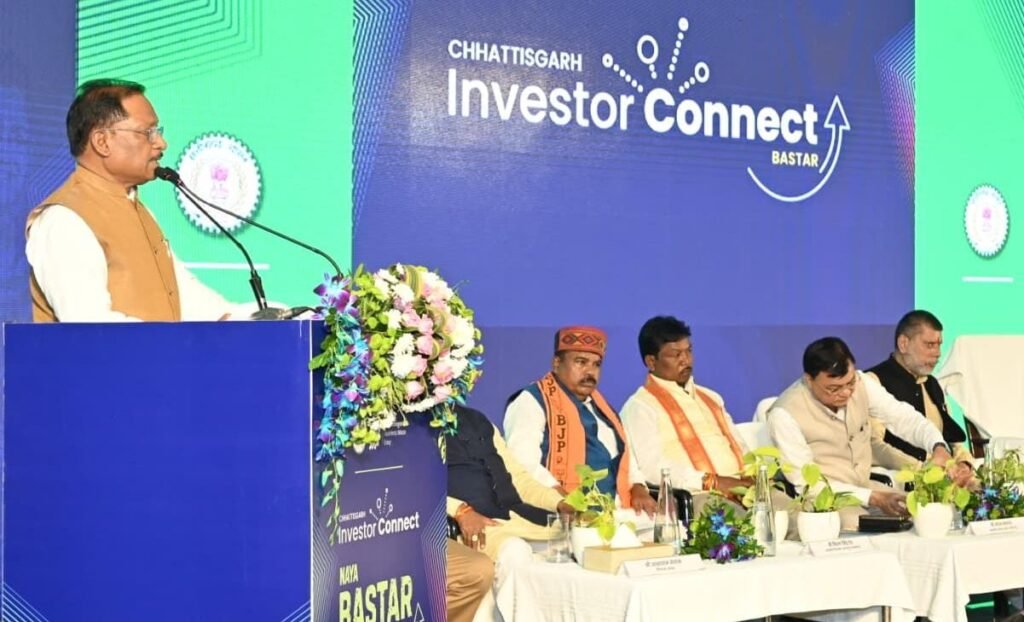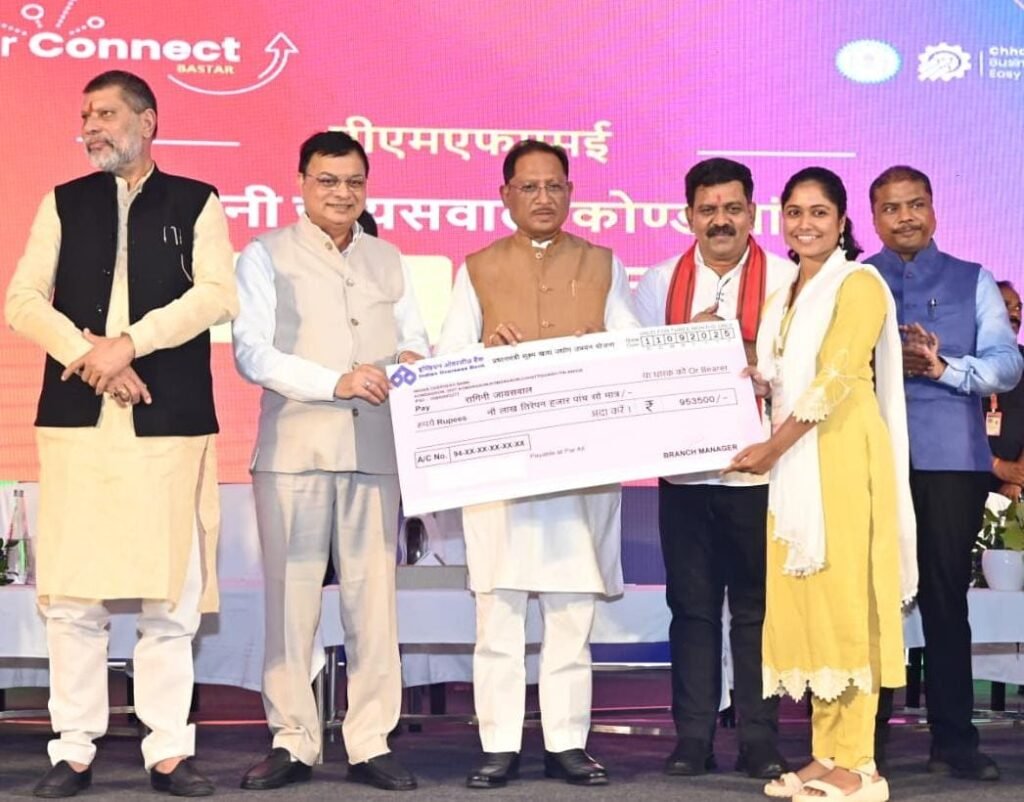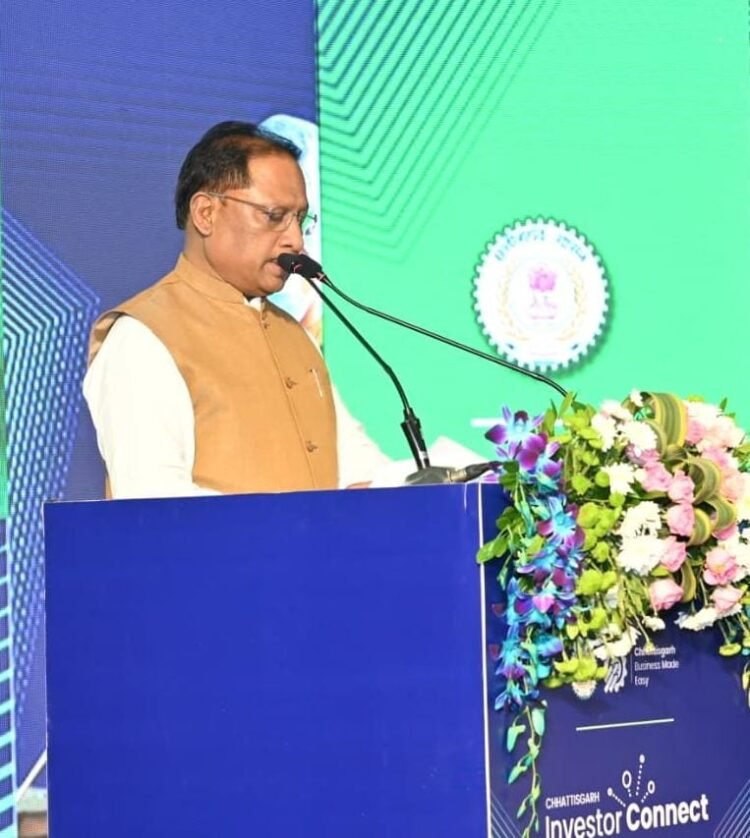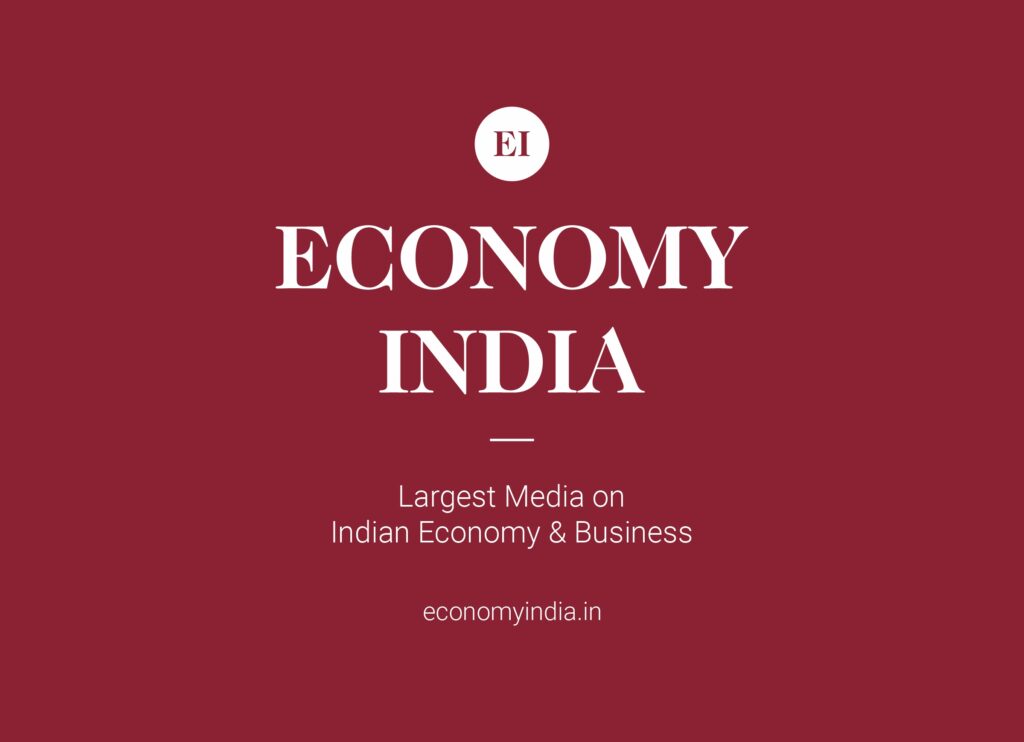Raipur (Economy India): The Government of Chhattisgarh has unveiled an ambitious Development Vision 2026 for the Bastar region, promising to reshape the tribal heartland into a hub of growth, security, and inclusive prosperity. With targeted investments in infrastructure, healthcare, MSMEs, skill development, and rehabilitation, the roadmap reflects a holistic approach to uplift Bastar from decades of isolation and conflict to a model of sustainable development.
Senior state officials described the strategy as a “transformational blueprint” that seeks to combine economic growth with social justice, aiming to make Bastar not just peaceful, but also prosperous and future-ready.

Massive Investments to Power Regional Growth
Chhattisgarh’s government has earmarked ₹15,000 crore in phased investments for Bastar by 2026, spread across priority sectors including connectivity, education, healthcare, and agriculture. A mix of public funds, private partnerships, and CSR projects is being mobilized.
Officials stated that new industrial corridors will be developed in Dantewada and Bijapur to attract small and medium industries, particularly those engaged in food processing, textiles, and forest-based products. Simultaneously, large-scale mineral resources in Bastar are being aligned with sustainable mining policies, ensuring employment generation while preserving ecological balance.
“Bastar’s development is no longer an aspiration, but an irreversible process,” said a senior state minister, emphasizing that investments will directly reach the grassroots.
Infrastructure: Roads, Rail, and Digital Bridges
Connectivity remains the backbone of the Vision 2026 agenda. Over 1,200 kilometers of new roads are to be laid under the Pradhan Mantri Gram Sadak Yojana and state schemes, linking remote tribal hamlets with district headquarters.
The Jagdalpur–Raipur air link, already operational, will see expanded services, while plans for extending railway connectivity from Dantewada to neighboring states are under review. Digital infrastructure is another priority: Bastar is set to become a “4G to 5G-ready zone”, with BharatNet ensuring broadband in over 90% of gram panchayats by 2026.
“These measures will open Bastar to new markets, tourism, and e-governance solutions,” said the state’s Chief Secretary.
Healthcare: From Scarcity to Access
For decades, healthcare in Bastar has been crippled by poor infrastructure and shortage of doctors. Vision 2026 proposes the establishment of three new district hospitals and 20 model primary health centers, equipped with telemedicine facilities.
The government has signed MoUs with reputed medical institutions to provide specialist doctors’ rotations in Bastar’s hospitals. A mobile health initiative, deploying 50 vans with doctors, lab technicians, and pharmacists, will cover the remotest areas.
Particular focus is being placed on malnutrition and maternal health, with expanded coverage of the Mukhyamantri Suposhan Abhiyan and Janani Suraksha schemes.
“By 2026, no mother or child in Bastar should lose life due to preventable conditions,” assured Health Minister Lakhan Lal Dewangan.
MSMEs and Livelihood Security
Bastar’s economy relies heavily on forest produce, handicrafts, and agriculture. To unlock its potential, the government is launching a Bastar MSME Mission, which will offer credit support, market linkages, and e-commerce platforms for local artisans.
A special focus is being given to minor forest produce like tamarind, mahua, lac, and sal seeds, which will be processed through 500 new self-help group clusters. Digital platforms will help tribal entrepreneurs directly connect with national and international buyers.
Additionally, the Bastar Haat (weekly market) will be revamped into a state-supported brand, showcasing tribal products under a single umbrella.

Skill Development and Youth Empowerment
To address unemployment and skill gaps, Bastar will see the creation of five new skill development centers aligned with emerging industries such as IT services, logistics, and renewable energy.
The government is also introducing dual apprenticeship programs, where Bastar’s youth will receive classroom training alongside industrial exposure. Over 1 lakh young people are expected to benefit by 2026.
“Skill development is not charity; it is empowerment,” said CM Vishnu Deo Sai during a recent event. “Bastar’s youth are the backbone of its transformation.”
Security and Rehabilitation
Decades of insurgency have slowed Bastar’s progress. Vision 2026 incorporates a dual strategy of security and rehabilitation. Police camps are being upgraded with modern facilities, while surrendered cadres are being provided skill training and alternative livelihoods.
The Bastar Peace and Development Fellowship has been launched to engage surrendered youths in community building, agriculture projects, and entrepreneurship. “Peace and prosperity must go hand in hand,” remarked a senior police officer in Jagdalpur.
Policy Framework and Governance Reforms
The development roadmap is being monitored through a Bastar Development Authority (BDA), which will ensure transparency, time-bound project execution, and citizen feedback.
Digital dashboards will allow the public to track road, school, and hospital projects in real time. A “One Bastar, One Vision” policy document is being circulated among stakeholders to align government departments, corporates, and NGOs under a common framework.
Bastar as a Symbol of Growth
Bastar has long been synonymous with conflict, backwardness, and neglect. With Vision 2026, the Chhattisgarh government is determined to change that narrative, presenting Bastar as a symbol of resilience, growth, and inclusive development.
“By 2026, Bastar will no longer be remembered for its challenges, but for its achievements,” said Chief Minister Vishnu Deo Sai, underlining the government’s Vision 2026 goal of an equitable, peaceful, and prosperous Bastar.
For the people of Bastar, this vision offers hope that the future will be brighter, more secure, and truly inclusive.
(Economy India)









